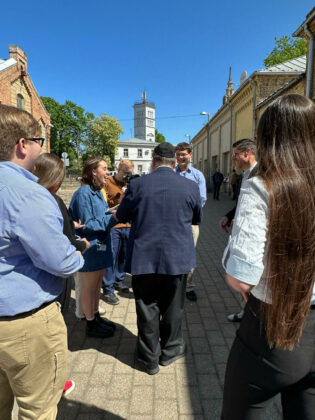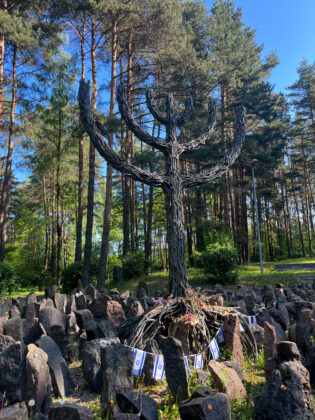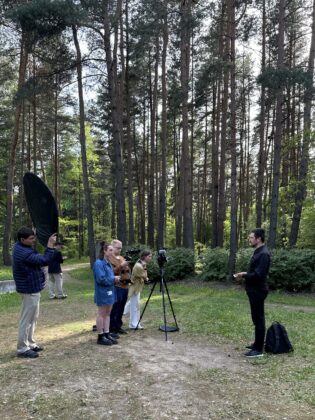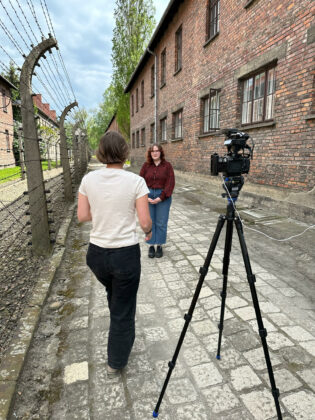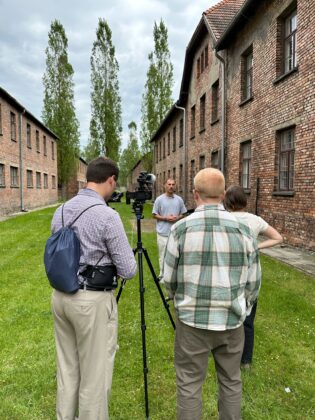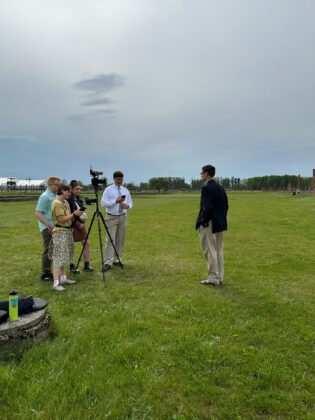Students in BYU’s School of Communications journalism sequence produced and premiered mini-documentaries following their trip to Poland, Lithuania and Latvia.
Students explored the histories of the Auschwitz-Birkenau concentration camp in Oświęcim, Poland, and the Jewish ghetto in Riga, Latvia, visiting Lithuania in between the two. They acknowledged the tragedies of the past but focused on the idea of hope and current efforts to document victims of Nazism.
Their documentaries premiered on June 14, where faculty, students and members of the German and Russian departments attended.
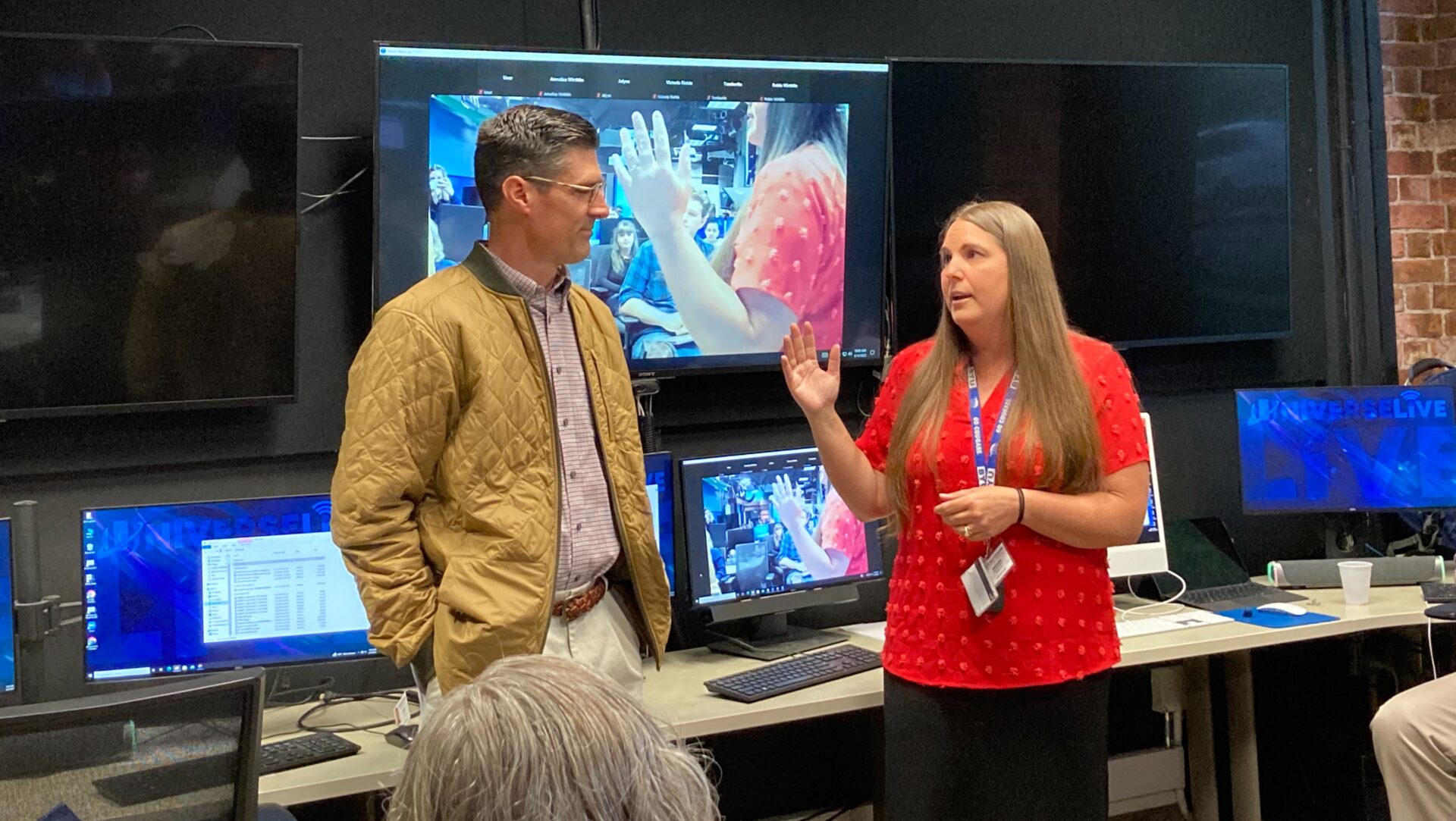
The mini-documentary filmed by journalism students Megan Brugger and Ethan Porter is the sixth of seven planned installments in The Daily Universe’s multi-year “A Poor Wayfaring Man of Grief” project.
Broadcast Production Manager Alan Neves and News Lab Director Melissa Gibbs have been involved with the project since its inception five years ago. Each of the project’s installments focuses on a different verse of the hymn, Neves said.
The sixth verse of the hymn, which centers on an imprisoned man, served as the impetus for the trip, Porter said. The hymn’s narrative aligned with some of the experiences of Jews and other minority groups during World War II.
“The concept was we wanted to do something with the prison system, and what happened during the Holocaust with the concentration camps and the ghetto,” Porter said.
Students collaborated with the Riga Ghetto and Latvian Holocaust Museum. They also visited the Rumbula Forest, where upwards of 25,000 Jews were murdered by Nazis.
While making arrangements for the trip, Gibbs said she felt the significance of the project.
“God wants these stories to be told, and there is a purpose, because when everything is falling apart and it suddenly comes into place, you know that there’s a higher power involved,” she said.
Both Gibbs and Neves said the sixth verse was the most difficult they had ever worked on owing to the heavy subject matter.
“It speaks to people in prison,” Neves said. “Physically, mentally, spiritually, in every aspect of the word.”
The trip’s linchpin was Tony Brown, a BYU Russian professor. He connected Gibbs and the journalism team with BYU interns working in Riga and at Auschwitz for the summer.
Interns in Riga create exhibits, lead tours and do translation work, Brown said. At Auschwitz, interns participate in genealogical and preservation work.
“Their lives have stories just as everybody’s lives have stories to tell,” Brown said, speaking of Holocaust victims. “They’re trying to retrace the lives of those people … giving them the voice they were deprived of when they were alive.”
Journalism students Joe Wirthlin and Abigail Westerby, who edited the documentary filmed at Auschwitz, focused on this positive preservation.
“We wanted to make a documentary to talk about the good things … happening there,” Westerby said, speaking of Auschwitz. “They’re making it better, and they’re still doing work there.”
Westerby said the staggering number of Jews who were sent to Auschwitz informed the documentary, but their focus was on individuals.
“It’s an individual human story,” she explained. “What can we find out about these individual human names?”
Wirthlin said Auchwitz was different than his expectation, because he shifted from viewing victims as a collective to seeing them as individuals.
“Going there, and seeing the faces of the photographed prisoners, and seeing the shoes left behind and the suitcases and the pots and pans…it makes it so different. They’re not [just] ‘people’ … they’re individuals, who individually lost their lives,” he said.
In navigating such heavy subject matter, Wirthlin said he and the other students often stepped back to refocus on the good.
“There is hope,” he said. “There is the hope that they are resting in peace. There is the hope that they are not forgotten. There is the hope that the atrocities that were committed will never happen again.”
Post-trip, Westerby said she has been reflecting on her own legacy and the legacies which have shaped her.
“Their experiences still mean something, and we need to take time out of our day to think about that,” she said.
For Brugger, the trip was a reminder that everyone is part of the human family. She said she also saw how the power of journalism connects people.
“They say being a journalist is like being a voice for the voiceless,” she said. “I’ve always really loved that idea, but I hadn’t really seen it in action until I was on this trip.”
Porter said documentary storytelling gave him and his classmates unique opportunities to develop relationships with their subjects.
“I really appreciate documentaries more now that I’ve been able to do it and learn more about these people,” he said.
Recent BYU graduate Kalei Fink contributed to both documentaries in post-production. Although she wasn’t able to visit the Holocaust sites in-person, she said she felt a deeper connection to history and the victims as she worked on the project.
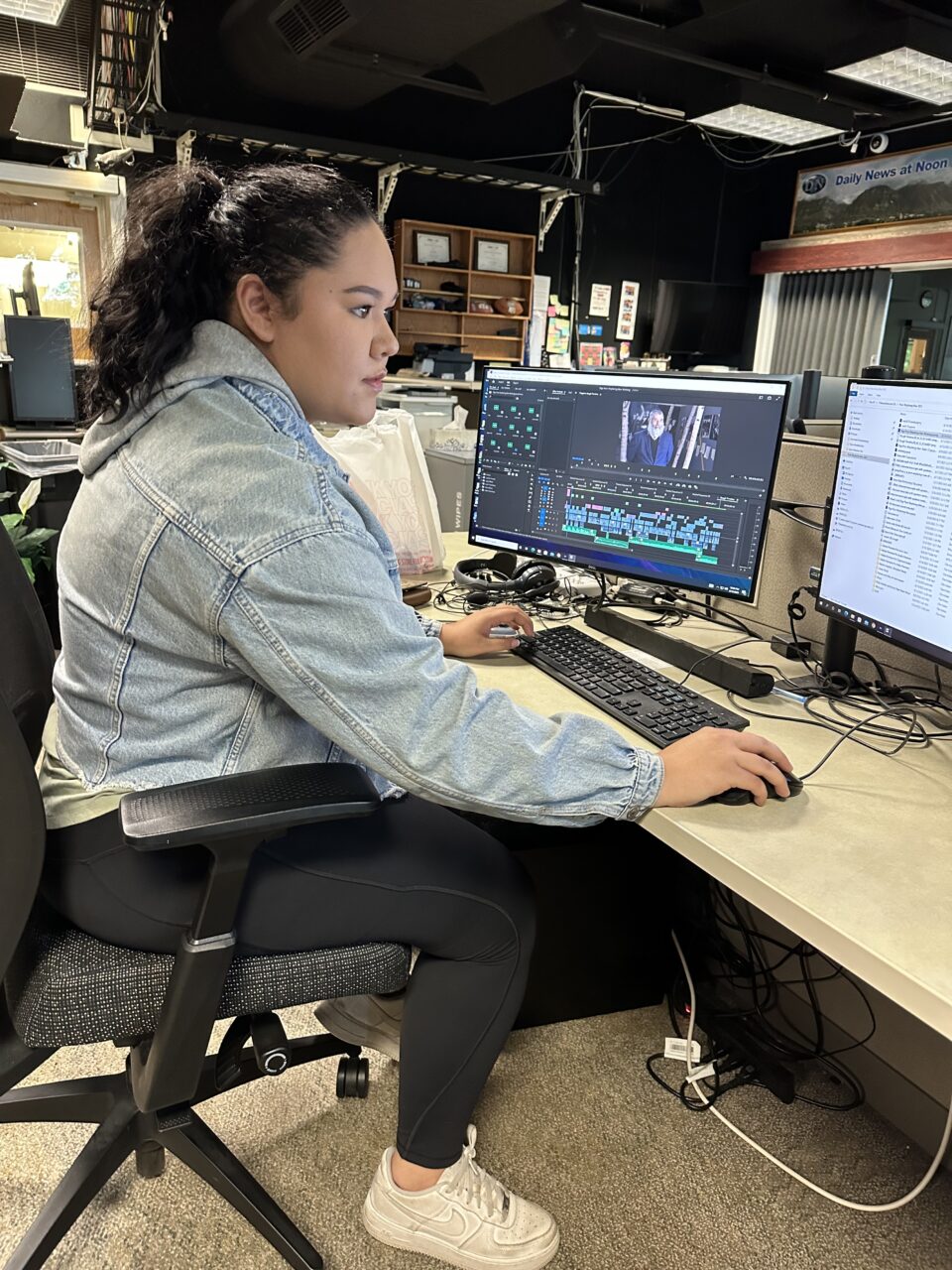
“You don’t have to physically be at the camps or the ghettos,” she said. “You can really connect with them from anywhere.”
Fink said she hopes viewers of the documentaries will be inspired by the work BYU students are doing and be empowered to “do their own kind of work.” In her view, anyone can contribute, whether or not they have a stamp in their passport.
Neves, who has been on several trips associated with the “Poor Wayfaring Man” project, said he hopes students who participated in this project will remember it for the rest of their lives.
“We’re all God’s children, and I think that’s the ultimate message of the hymn,” he said. “The Savior is the savior of the world, and He reveals Himself in many ways across many different religions … we’re glad to be part of that.”
The project afforded students the opportunity to go beyond the textbook and the lab, Gibbs said, but it was more than a portfolio-building experience.
“Our campus motto is ‘Enter to learn, go forth to serve.’ These documentaries demonstrate some of the greatest service of all, the work that BYU students are doing to help preserve the memory of those who were murdered in the Holocaust,” she said.
For more information about the “A Poor Wayfaring Man of Grief” project, click here.

